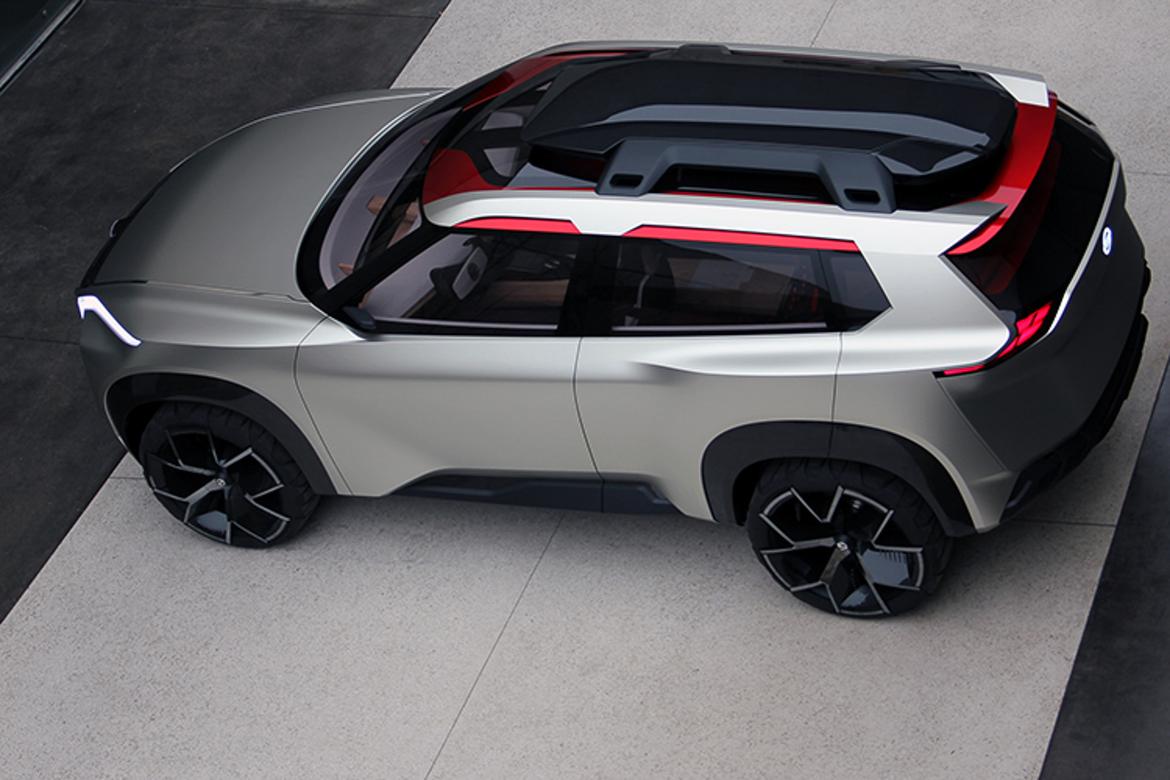
Looks like: A possible early peek at the next-generation Nissan Rogue
Defining characteristics: Six seats in three rows, retractable rooftop cargo box, traditional Japanese craftsmanship
Ridiculous features: Gesture- and eye-based interfaces, seven display screens, tire tread fused to wheels, koi fish virtual personal assistant
Chance of being mass-produced: Nissan says Xmotion Concept design cues should arrive by 2020.
In the SUV-obsessed U.S., if you're an automaker without a new production SUV to debut, the next-best thing is probably a concept SUV. On the heels of the launch of the Kicks subcompact SUV at the 2017 Los Angeles Auto Show earlier this winter, Nissan has revealed the Xmotion Concept at the 2018 North American International Auto Show in Detroit. Pronounced "cross motion," the compact SUV concept has three rows of seats for up to six people and features design elements inspired by traditional Japanese crafts.
Related: More 2018 Detroit Auto Show Coverage
Even though the Xmotion Concept is intended to signal the future, its styling hasn't completely abandoned the present. The front end gets an updated version of Nissan's now-familiar "V-Motion" grille that's wider and deeper than the design currently in use, and it's bordered by a new take on Nissan's boomerang-style headlights. The lights handle all lighting functions - including turn signals and positioning lights — from a single source.
Large wheels and tires are a concept car prerequisite, and while the Xmotion Concept's 21-inch aluminum-alloy wheels fit the bill, Nissan has put a new spin on them by laminating the all-terrain tire tread directly to the wheels. Developed with Michelin, the tread uses run-flat construction.
Though the Xmotion Concept's interior has a modern look, Nissan says its designers used traditional Japanese materials and construction techniques when creating it. The console, for instance, uses a Japanese wood-joining technique used in temples and shrines that foregoes nails and glue. The console and instrument panel use wood veneers cut from a single cedar tree sourced from northern Japan.
Despite the emphasis on age-old Japanese craftsmanship, the Xmotion Concept also packs high-tech features. A motion sensor in the center console lets you control the multimedia and climate-control systems with hand gestures and eye movements; there are seven display screens in the cabin; there's a fingerprint sensor in place of a key fob; and the side mirrors have been replaced with cameras.
's Editorial department is your source for automotive news and reviews. In line with 's long-standing ethics policy, editors and reviewers don't accept gifts or free trips from automakers. The Editorial department is independent of 's advertising, sales and sponsored content departments.


